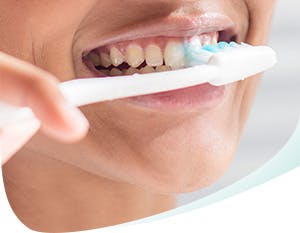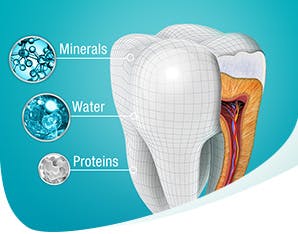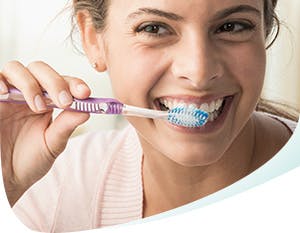- About Enamel
- What Is Tooth Enamel?
- 4 Types and Causes of Enamel Wears | Pronamel
- What Is Remineralization? How to Remineralize Your Teeth
- Why You Should Protect Your Enamel
- Healthy, White Teeth: Surface Stains vs Enamel Erosion
- How to Repair Tooth Enamel and Prevent Acid Erosion
- Can You Regrow Your Tooth Enamel?
- Enamel Hypoplasia: Causes and Treatment
- Does Enamel Protect Teeth?
- What Are the Symptoms of a Cavity?
- How Does the Color of Dentin Affect Tooth Color?
- What Is Nighttime Bruxism?
- What Is Daytime Bruxism?
- What Color Should Tooth Enamel Be?
- What Does a Cavity Feel Like?
- What Are Teeth Made Of?
- How Rinsing with Fluoride Helps Enamel
- Can I Repair My Enamel by Using Mouthwash?
- How to Help Prevent Cavities in Children
- Learn About Acid/Enamel Erosion
- How to Sanitize Your Toothbrush
- Cavities vs. Acid Erosion
- Foods and Drinks That Cause Acid Erosion
- How to Prevent Acid Tooth Erosion and Protect Enamel
- Protect Your Teen's Teeth from Acid Erosion
- The Most Acidic Foods and Drinks for Teeth
- Oral health and overall health
- The Effects of Acid Erosion
- Does Enamel Decay Cause Yellow Teeth?
- Can Hot Beverages Impact Enamel?
- Tooth Pain and Sensitivity in Kids
- Why Pronamel®?
- Pronamel® Toothpaste Actively Strengthens Weakened Tooth Enamel
- The Benefits of Pronamel® Toothpaste
- Behind the Paste: How Pronamel Works
- Pronamel vs Sensodyne: Which Toothpaste is Right for You?
- The Science Behind Pronamel® Intensive Enamel Repair
- What Is Sodium Lauryl Sulfate?
- The Science Behind Active Shield
- What Are the Active Ingredients in Mouthwash?
- Pronamel Toothpaste Ingredients
- Our Products
- Pronamel Clinical Enamel Strength Deep Clean Toothpaste
- Pronamel Clinical Enamel Strength Whitening Action Toothpaste
- Pronamel Kids Berry Twist Toothpaste
- Pronamel Kids Bubble Twist Toothpaste
- Pronamel Active Shield Whitening Toothpaste
- Pronamel Active Shield Fresh Mint Toothpaste
- Pronamel Intensive Enamel Repair Extra Fresh Mouthwash
- Pronamel Intensive Enamel Repair Clean Mint Mouthwash
- Pronamel Intensive Enamel Repair Extra Fresh Toothpaste
- Pronamel Intensive Enamel Repair Clean Mint Toothpaste
- Pronamel Intensive Enamel Repair Whitening Toothpaste
- Pronamel Intensive Enamel Repair Toothbrush
- Pronamel Intensive Enamel Repair Toothpastes and Mouthwashes
- Pronamel Gentle Whitening Toothpaste
- Pronamel Fresh Breath Toothpaste
- Pronamel Multi-Action Toothpaste
- Pronamel Daily Protection Toothpaste
- Pronamel Clinical Enamel Strength
- Healthy Lifestyle Blog
- For Professionals
- Where to Buy
- Coupon




